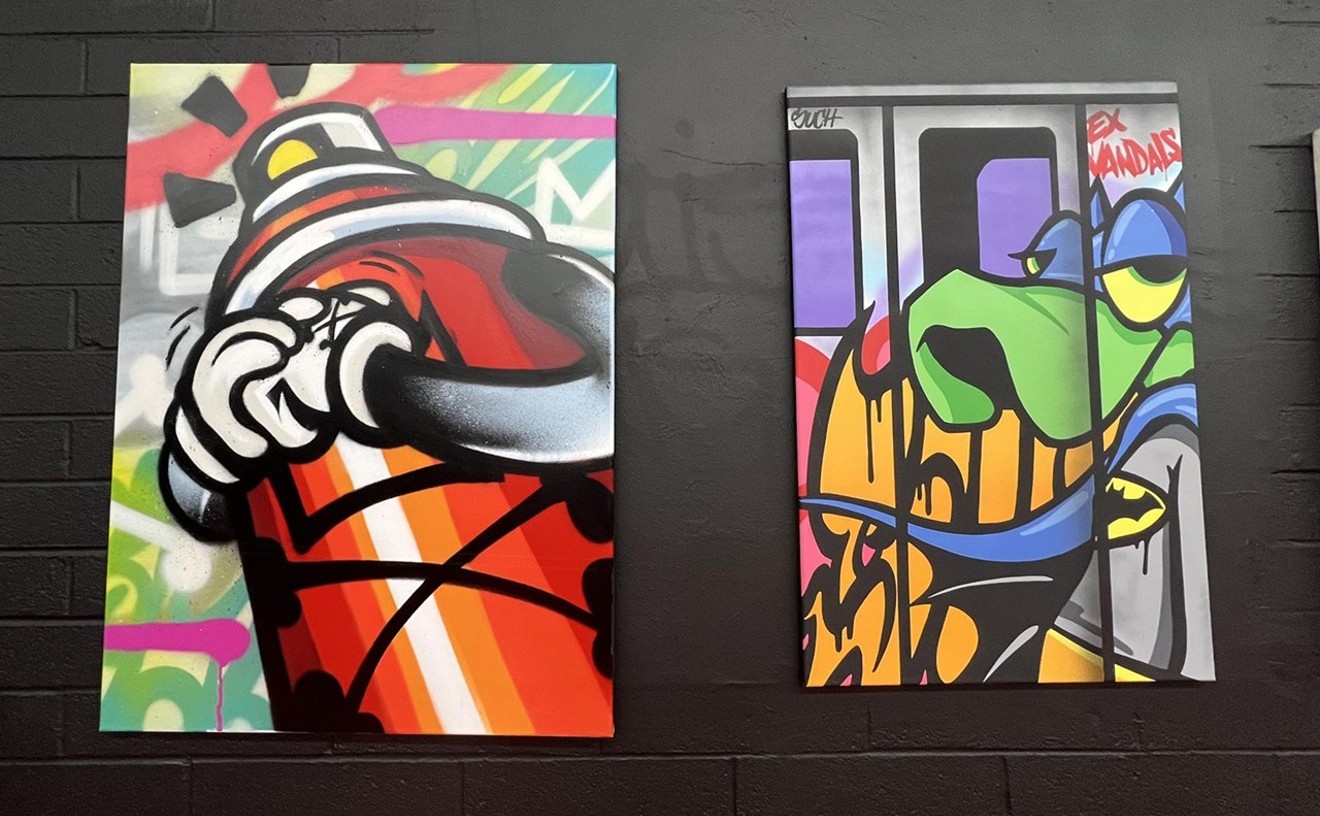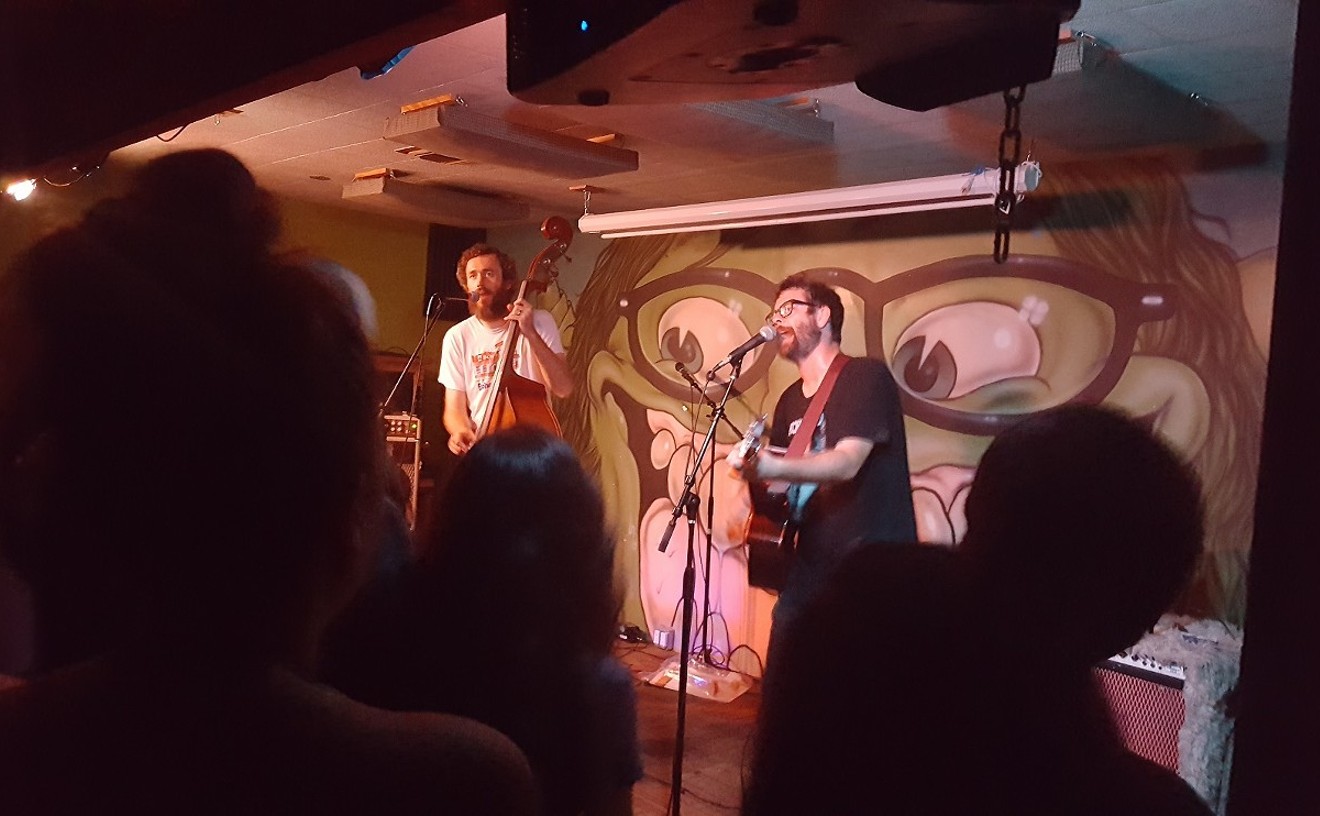Maybe I shouldn't admit that I've watched every single rerun of Charmed at least three times. Sneer if you must, but my devotion to the early-21st-century TV show featuring three young witches with enviable powers has given me invaluable insight into the subject matter of "Shapeshifters," the exhibition running at Modified Arts until February 12.
Modified's latest show offers up the disparate work of artists Ingrid Restemayer and Christy Puetz, work that's about as visually yin and yang as you can get, though both are based conceptually on the archetypal myth of the shape-shifter. For those of you who haven't sat through hours of Charmed episodes, a shape-shifter is a creature who, either voluntarily or involuntarily, is magically capable of changing into another creature or object. For millennia, every world culture has spun tales about such creatures — we're still doing it to this day (think The Chronicles of Narnia and all those Harry Potter and Twilight movies).
Restemayer and Puetz have seized the idea to illustrate how humans psychologically and perceptually shape-shift, whether consciously or unconsciously, depending on the people, situations, or personal experiences with which they are dealing.
Modified's exhibition, well balanced and thematically seductive, is a great example of how artists can work collaboratively, while maintaining their distinct aesthetic identities, to produce a cohesive result. While Phoenix-based Puetz and Minneapolis-based Restemayer may live and work in diametrically opposed desert-and-snow environments and use completely different approaches to their chosen media, they've been friends and mutual influences on one another since they met more than 20 years ago at the University of North Dakota, where they graduated with degrees in fine arts.
Restemayer's pieces are stylistically minimalist, highly ordered and controlled, and two-dimensional. They incorporate small, totemic pop cultural objects and other found items onto fine art paper with sewn thread patterns that can be read as either constricting nets or comforting nests, depending on your viewpoint. A key, old coin, Mao Tse-tung medal, lotería card, drink umbrellas, Monopoly money (origami-folded into tiny shirts), even a plastic pickle — nothing goes untransformed in Restemayer's quest to play with our sense of perceptual shape-shifting. In Three Little Maids (2009), she's used three translucent plastic mermaids surrounded by a sea of black stitches, leaving the viewer to wonder whether the sea is swallowing the tiny creatures or offering them up to the ocean's surface. And in a series of white-on-white pieces incorporating small cocktail swords, angioplasty needles, and clear plastic push pins, Restemayer mimics frozen northern landscapes buffeted by the elements. The artist underscores the sentiment that our perceptions are shaped and molded by not only our own experiences, but the contexts within which we experience a particular thing.
In complete counterpoint, Puetz's beaded, three-dimensional taxidermy forms of earth-bound albino squirrels, inspired by various shape-shifter legends, are born of fantasy (covered with intricately woven, primarily white glass seed bead work in peyote stitch) and appear plausibly kinetic. For a number of her shape-shifter works, she's created environments with beaded components, including eggs encrusted with iridescent sequins. Puetz draws liberally from a treasure chest of old tales, both Western and Asian, as inspiration for each piece. Among others, Leda, from the old Greek tale of Leda and the swan, Odin and Loki from Norse mythology, and Bakeneko from a Japanese ghost-cat legend all make appearances.
In addition, Puetz's 2009 "Accidental Hosts" series of colorfully beaded bird forms are swathed in patterns that loosely replicate the microscopic appearance of serious diseases (my personal favorite is hot lilac-and-orange Chlamydia), cleverly underscoring the recurrent theme underlying "Shapeshifters" — what you see might not be exactly what you get.










